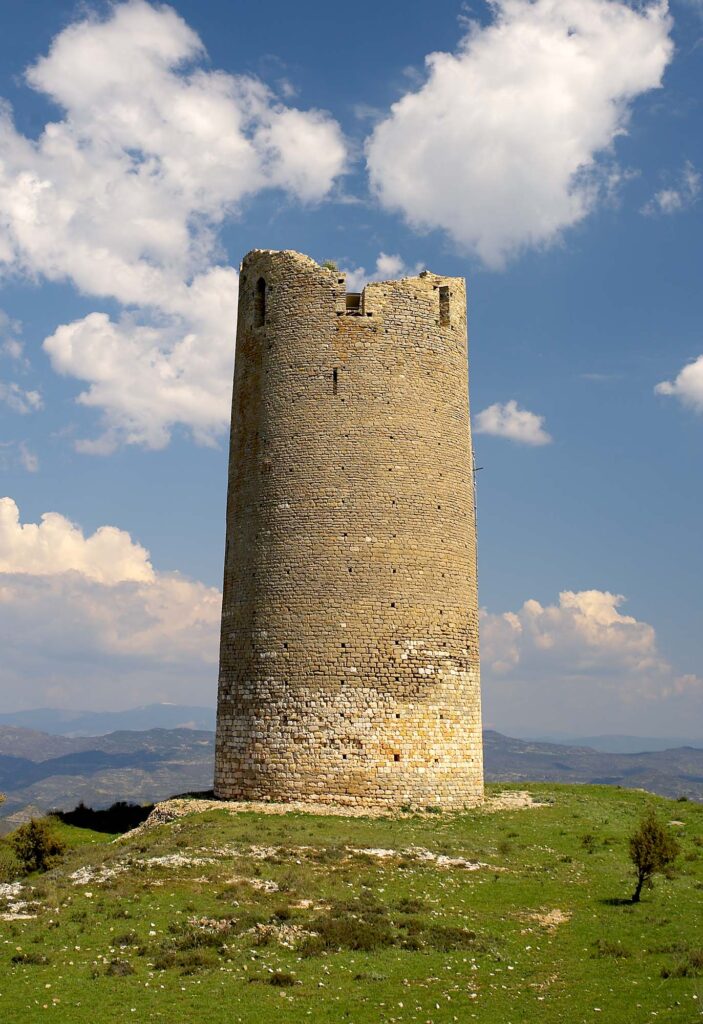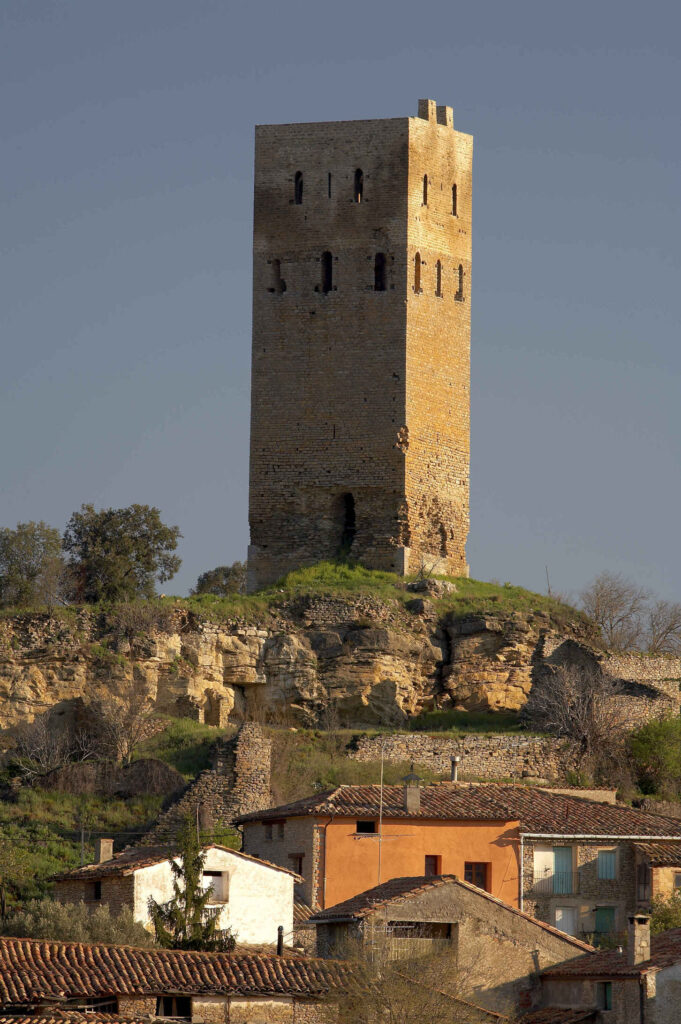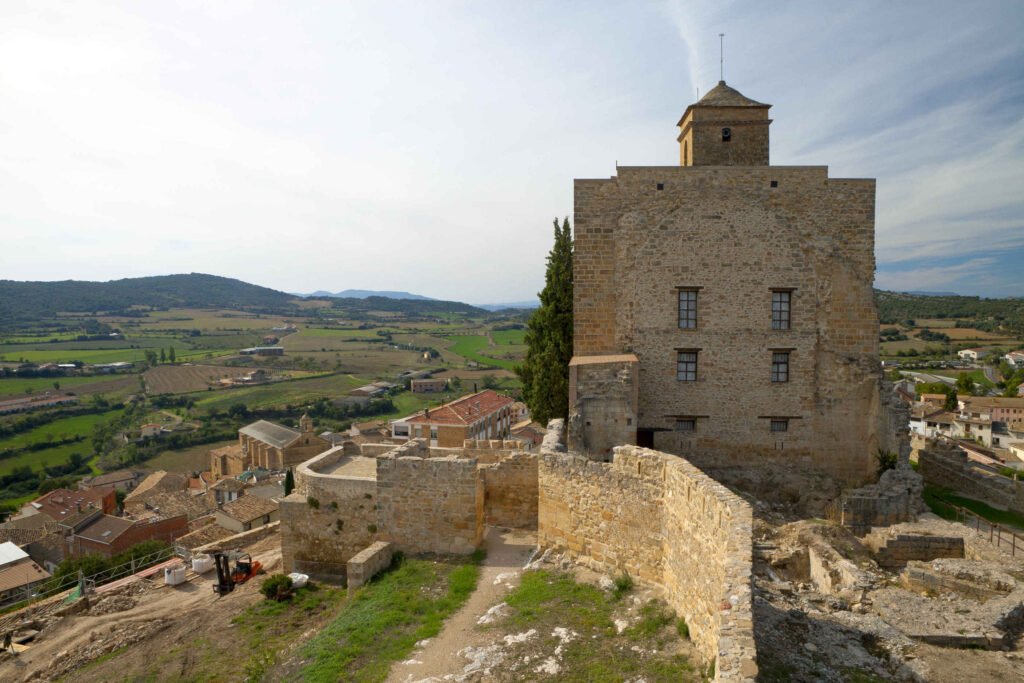Castillos de La Ribagorza
El emplazamiento de Montañana, su urbanismo y también sus restos más antiguos, la torre de la Mora, muestran los orígenes militares de la localidad, como un puesto adelantado en la expansión de los reinos cristianos. Una primera torre de vigilancia y comunicación, siempre completada con una ermita, dio la protección para que se asentara la población a medida que se consolidaba la frontera con los reinos musulmanes del sur y los señores cristianos.
Para seguir acercándose a esta época convulsa, la visita a Montañana se puede ampliar a varias localidades cercanas, donde también se conservan interesantes riesgos de castillos y fortificaciones: Vicacamp, Luzás y Benabarre.
Viacamp


Retornando luego por la misma carretera nacional, Viacamp extiende su caserío al pie del castillo de Via Campano, parte de la línea de torres de defensa mandada construir por Ramiro I hacia 1061, que acabó por dar nombre a la población. Era parte de un sistema de distintas torres de vigilancia en altos, en contacto visual entre ellas, y así se pueden divisar desde esta las fortificaciones de Chiriveta y Falls.
Se conservan restos de murallas y la antigua iglesia, aunque la pieza central del conjunto, imponente tras una cuidada rehabilitación, es su torre circular, en la que los canteros ribagorzanos aplicaron las técnicas llevadas por los maestros lombardos al palacio condal de Fantova.
Es un edificio de más de 20 m de alto, sustentado en muros que superan los 2 m de ancho en la parte baja. Sigue la tipología tradicional en estas construcciones defensivas y tiene su acceso a gran altura. Por el interior se sube a la planta de vivienda y a la de defensa, que en origen se completaba con una cubierta de madera.
Elementos destacados son el retrete de la planta de acceso y la capilla, que se creó abriendo en el muro del piso defensivo un pequeño ábside orientado.
Luzás


La carretera HU-V 9321 permite llegar a otra localidad surgida al pie de una torre defensiva de la misma red, Luzás. En este caso, su planta es pentagonal al exterior y cuadrada en el interior, con dos hileras de aperturas defensivas como rasgo más singular.
Los restos muestran que el conjunto original incluía alrededor de la torre un recinto amurallado trapezoidal, con una torre semicircular en cada esquina, de las que solo se conservan las bases de dos. El torreón mide 25 m, distribuidos al interior en seis plantas, con acceso desde la tercera, que sumarian un cadalso de madera, desaparecido. Como Viacamp, tiene retrete en la planta de entrada y una capillita en el piso de defensa.
La torre se completa con la iglesia de San Cristóbal, del siglo XII, que combina rasgos jaqueses y lombardos, según el modelo del monasterio de Alaón. Es un templo de tres naves, al que siglos después se le añadieron la torre y las capillas del muro norte. De la decoración exterior destaca la portada del muro sur, que luce una cruz, rodeada por motivos alegóricos e inscripciones relacionados con el Apocalipsis.
Benabarre


Benabarre, capital histórica de La Ribagorza, también desarrolló su núcleo a partir de su castillo; en origen un fuerte musulmán, conquistado por Ramiro I en 1058. El caserío se distingue así por su urbanismo en ladera, con pintorescas callejas, porches y pasadizos.
El aspecto actual del castillo refleja su accidentada historia, ya que su estructura se modificó cuando Jaime II, a principios del siglo XIV, restauró el condado de Ribagorza y convirtió el lugar en residencia palaciega. Felipe II, a finales del siglo XVI, tras varios conflictos nobiliarios, incorporó el condado a la Corona y mandó desmantelar el castillo; aunque se siguió utilizando como fuerte militar, por lo que hay elementos de los siglos XVII a XIX.
Es un conjunto de planta rectangular, compuesto por dos recintos escalonados, con restos de sus distintas épocas. De época románica datan los muros del espacio superior, donde también se conservan los restos de una torre cuadrada, posiblemente musulmana, y, ya en el recinto inferior, integrados en un templo gótico, los cimientos de la iglesia primitiva.
